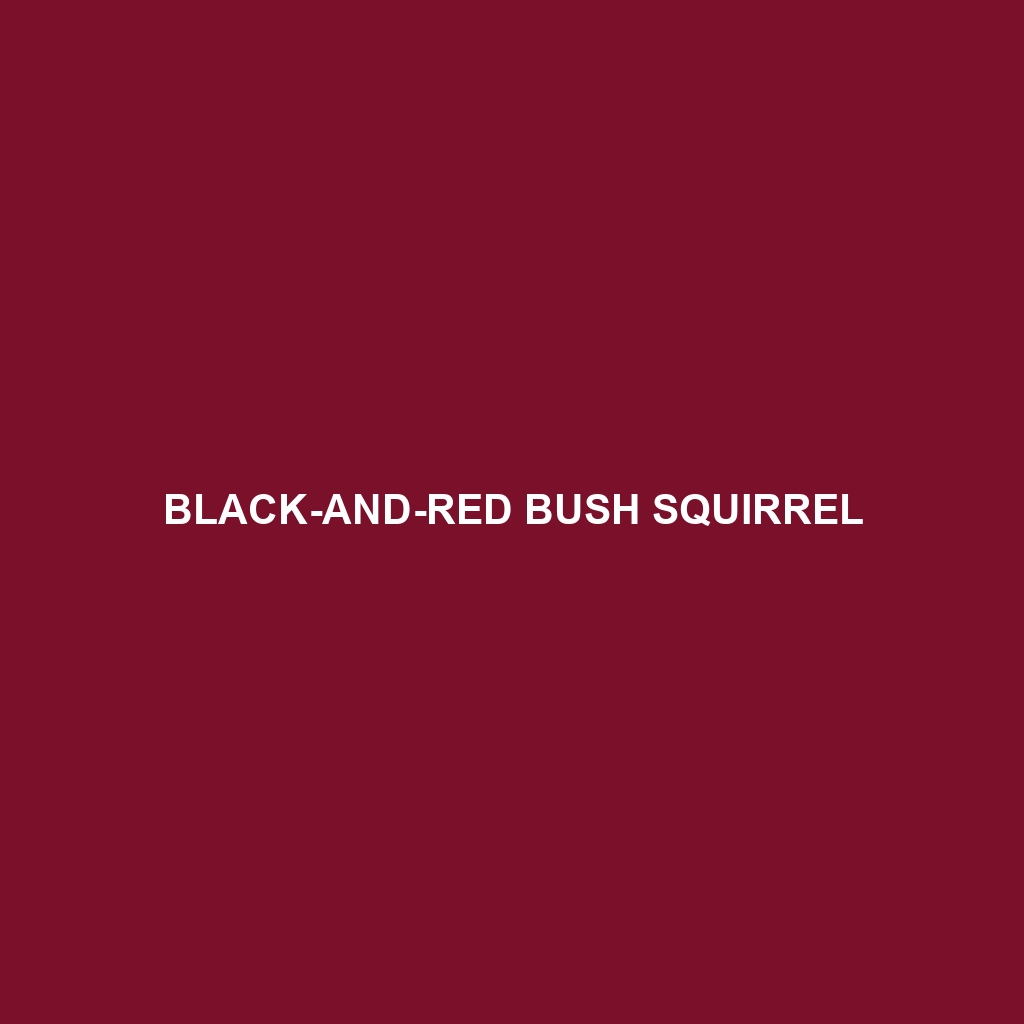Black-and-red Bush Squirrel ()
Common Name: Black-and-red Bush Squirrel
Scientific Name:
Habitat
The Black-and-red Bush Squirrel is primarily found in the dense forests and bushlands of Central and West Africa. Species typically inhabit areas with rich vegetation, particularly in regions such as the rainforests of the Congo Basin. These squirrels thrive in environments that provide ample cover and food sources, including areas near rivers and streams where their preferred plants and trees grow abundantly.
Physical Characteristics
The Black-and-red Bush Squirrel is known for its striking appearance. Adults typically range from 22 to 30 centimeters in length, excluding the tail, which can add an additional 25 centimeters. Their fur is predominantly black with vibrant reddish-brown patches on the back and tail. These distinctive colorations not only serve as camouflage but also play a role in social signaling among the species. They have large, expressive eyes and bushy tails that help them maintain balance as they navigate through trees.
Behavior
These squirrels are primarily diurnal, meaning they are active during daylight hours. The Black-and-red Bush Squirrel is known for its agile movements and skillful climbing abilities, often spotted leaping from branch to branch in search of food. They are social creatures and commonly live in small family groups. Vocalizations, including chirps and barks, are used to communicate with other members of their group, especially when warning of predators or calling for mating.
Diet
The diet of the Black-and-red Bush Squirrel mainly consists of fruits, seeds, nuts, and leaves. They are opportunistic feeders and have been observed foraging for insects and fungi to supplement their diet. Their feeding habits are crucial for seed dispersal, making them important contributors to the regeneration of forest ecosystems.
Reproduction
The Black-and-red Bush Squirrel has a breeding season that typically occurs during the warmer months when food resources are more abundant. Females can give birth to 2 to 4 young after a gestation period of about 45 to 50 days. Offspring are born hairless and blind, relying heavily on their mother for nourishment and protection during their early weeks. Weaning occurs around 6 weeks of age, and young squirrels begin to explore their environment shortly thereafter.
Conservation Status
While the current conservation status of the Black-and-red Bush Squirrel is not explicitly categorized, habitat loss due to deforestation poses a significant threat to its population. As habitats continue to degrade, these squirrels may face increased pressures that could lead to their classification as vulnerable or endangered in the future.
Interesting Facts
– The Black-and-red Bush Squirrel is often mistaken for other squirrel species due to its similar coloring but can be identified by its distinctive markings and size.
– These squirrels have a unique way of storing food by burying nuts in the ground, which helps them survive during periods of scarcity.
Role in Ecosystem
The Black-and-red Bush Squirrel plays a key role in its ecosystem as a seed disperser, assisting in forest regeneration. Their feeding habits contribute to the health of their habitat by promoting plant diversity. Additionally, they serve as prey for various predators, establishing them as an integral part of the food web in their native environments.
